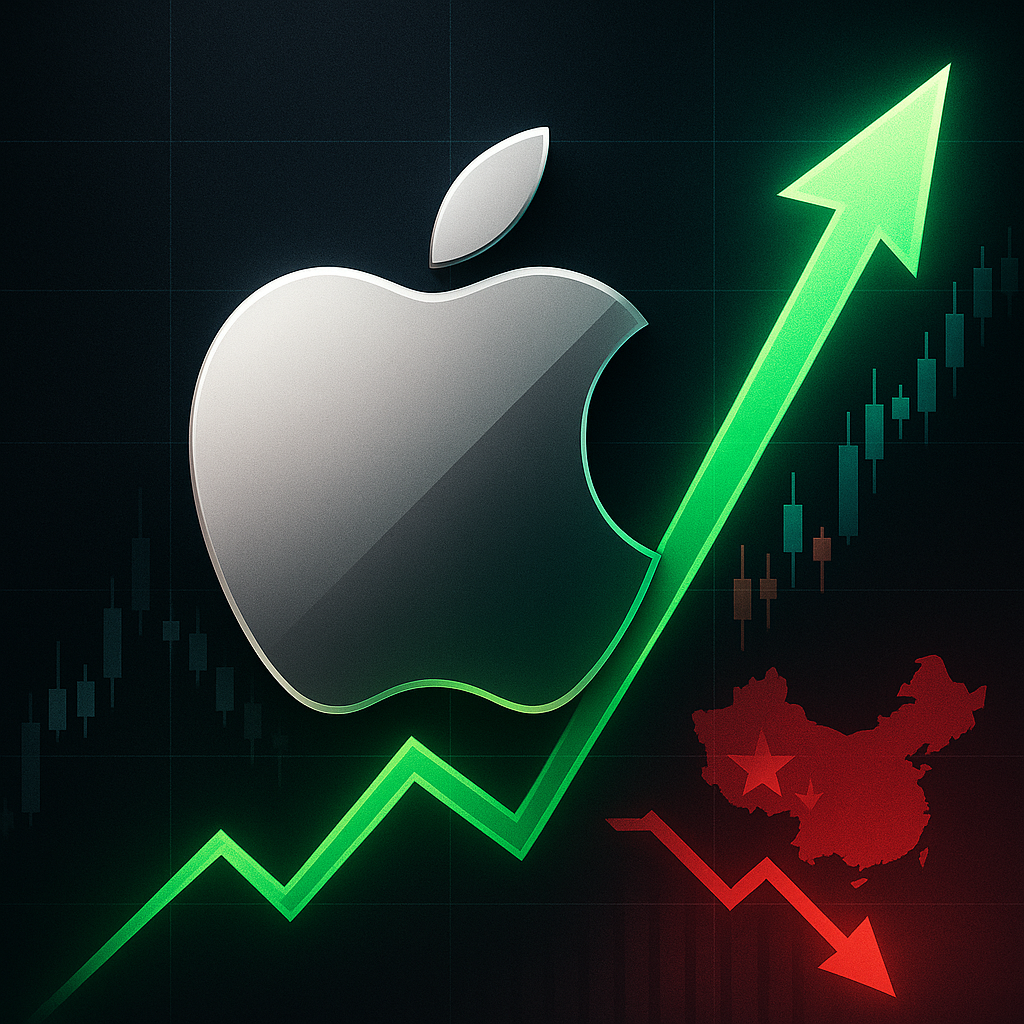When Apple Inc. delivered its fiscal Q4 results, the market tone was a little surprising: on the one hand, the company beat expectations—yet on the other, it flagged a clear weakness in China sales. Let’s unpack how Apple beat on Q4 expectations, why its stock rose on that strong outlook despite poor China sales, and what this means for investors and the wider tech ecosystem.
Strong Performance Gains Traction
Apple reported revenue of approximately $102.5 billion in its Q4, topping the consensus estimates. EPS came in at around $1.85, beating the estimate of roughly $1.77. Meanwhile, the services business and unit sales of core devices held up well.
In short: Apple delivered on the headline numbers and gave investors something to chew on.
China Sales: a Drag on the Quarter
But the “despite” part of the headline is important. Apple’s results included a drop in revenue in the Greater China region to about $14.49 billion, down from roughly $15.03 billion a year ago. That region’s performance missed analysts’ expectations, reflecting ongoing challenges with competition, consumer demand and perhaps local supply/back-log issues.
Although worldwide iPhone revenue still grew (to about $49.03 billion) this number slightly missed the analyst consensus. So yes: Apple beat on the overall quarter, but the China weakness remains a notable patch.
Why the Stock Rose: Strong Forward Guidance
If you only looked at the China figure you might have felt gloom—but the stock moved upward. Why? Because Apple offered bold guidance. Management pointed to expected revenue growth of 10–12 % in the holiday quarter, with double-digit growth for iPhone sales.
That kind of forward outlook gives confidence—even if today’s regional numbers are soft. When a large, established company like Apple signals accelerating momentum, markets respond.
Reading Between the Lines: What’s Working
- The services business continues to scale, which matters because it is high-margin and relatively less cyclical. Apple’s services revenue hit records this quarter.
- The iPhone line still commands strong global recognition. While one region is under pressure, the company is signalling that it expects growth elsewhere to offset it.
- Investments in new technologies and capex (including AI, supply chain shifts, etc) were flagged as part of the story.
So, Apple is showing that its core business is resilient and expects to deliver even better numbers ahead.
The China Risk: Why It Matters
China is a big deal for Apple. Slowing growth or decline there matters because:
- It’s a major market both in terms of volume and brand value.
- Competitive dynamics in China (local brands, price pressure) are sharper than in many other markets.
- Supply chain and regulatory issues can hit China earlier or harder than elsewhere.
With sales down there this quarter, two things matter: whether the drop is temporary and whether Apple can regain share or demand. Management claims they expect China growth to resume in the next quarter. If that happens, the risk recedes; if it doesn’t, it remains a longer-term headwind.
Investor Implications: What to Watch
For those watching Apple stock (ticker AAPL) and thinking about positioning, here are some key take-aways:
- The guidance indicates confidence, which supports the stock. But guidance is always a projection, not a guarantee.
- The China region and its potential rebound are wildcard variables. If China falters further, that could dampen Apple’s growth story.
- Margins matter: if service growth remains strong and hardware demand holds, Apple can sustain good profitability. But if hardware demand slips globally (even beyond China), that could bite.
- Macro factors (trade policy, global device demand, supply chain disruption) remain relevant. For example, tariffs and manufacturing shifts are part of Apple’s narrative.
- For investors seeking growth, Apple is walking the line between being a tech growth story and a mature tech business. The strong outlook helps the former.
In short: the beat is real, the outlook bullish, but there are caveats.
Conclusion
In the most recent earnings cycle, Apple beat on Q4 expectations, and the market rewarded it—despite less-than-ideal results in China. The story here is one of resilience and forward momentum: Apple’s services business is thriving, its device franchise remains strong, and it has signalled robust future growth. At the same time, the China weakness cannot be ignored. It reminds investors that even the biggest players have regional risks.
If you’re tracking Apple, key upcoming data points will include how China performance evolves, how iPhone demand holds up (especially new models), and whether services growth keeps up its momentum. Combine those with the broader global economic picture and you’ve got the dimensions of Apple’s next phase.


